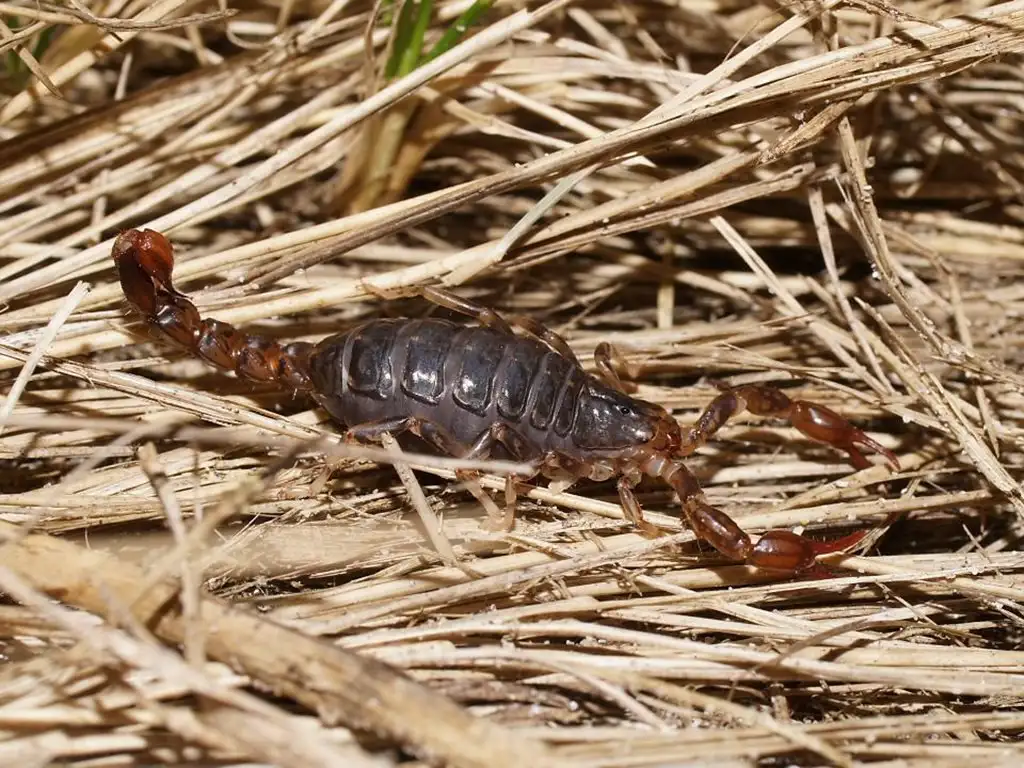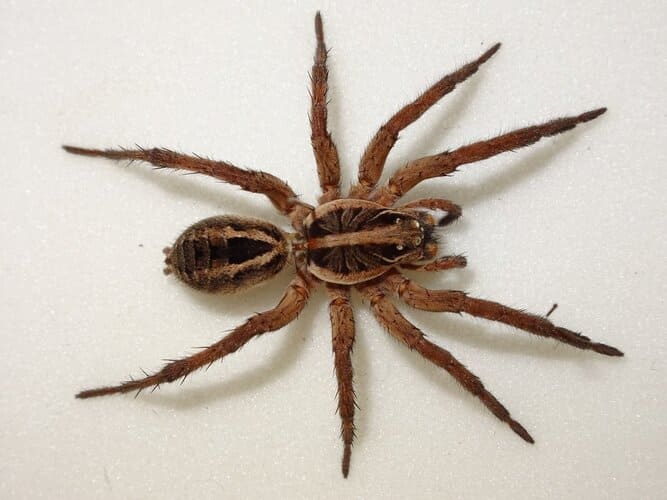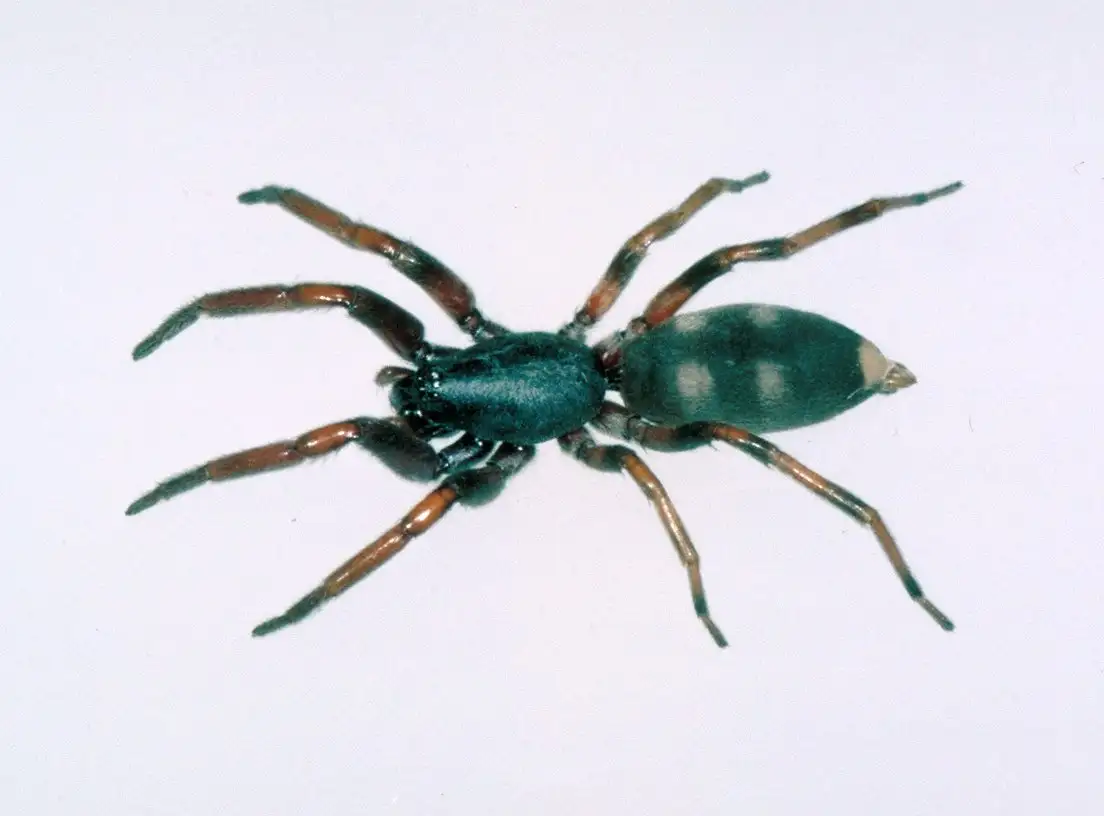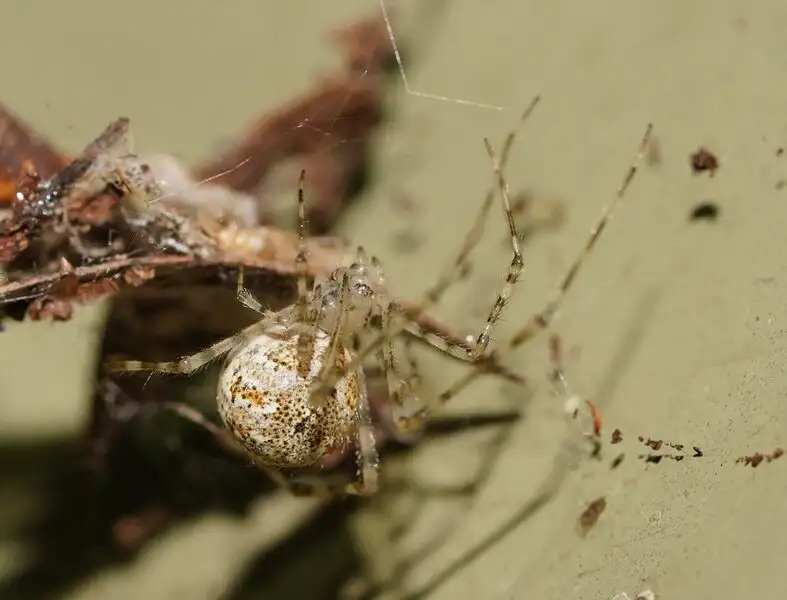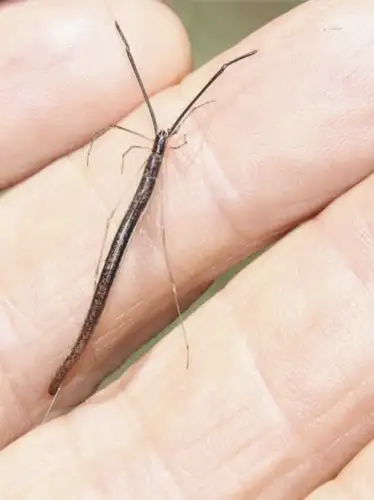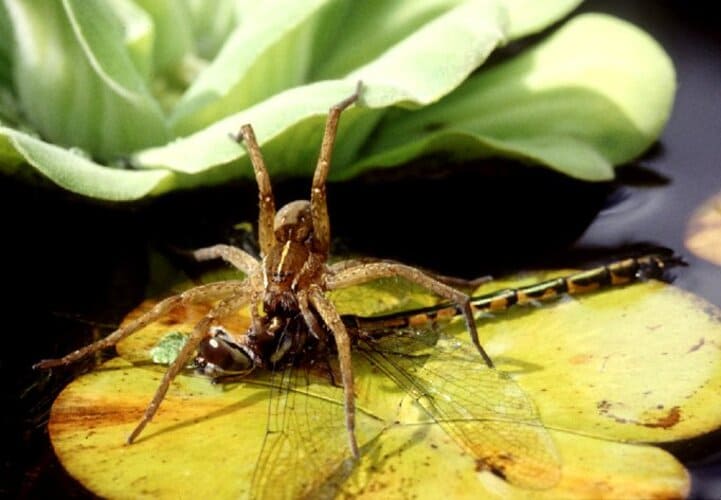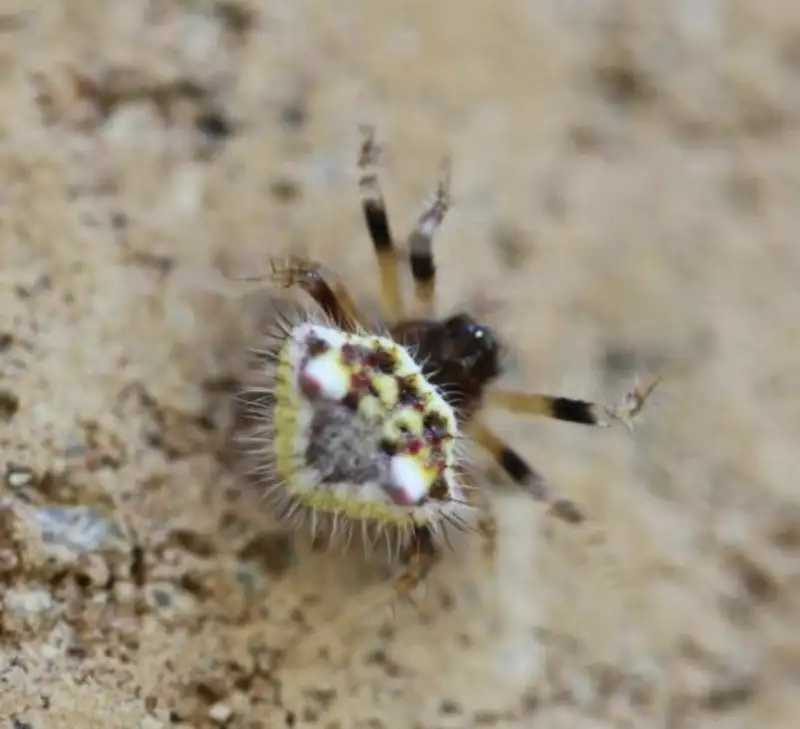Birgus latro
IUCN
VUBasic Information
Scientific classification
- name:Birgus latro
- Scientific Name:Coconut Crab,Gossip crab, robber crab
- Outline:Arthropoda
- Family:B.latro Birgus Coenobitidae Arthropoda
Vital signs
- length:1m
- Weight:6-12kg
- lifetime:40-60years
Feature
Huge size, powerful claws, and a master tree climber
Distribution and Habitat
They live in tropical forests near the sea. They usually live on land, but return to the sea during the breeding season.
Appearance
It looks like a giant spider, with calcified body and limbs.
Details
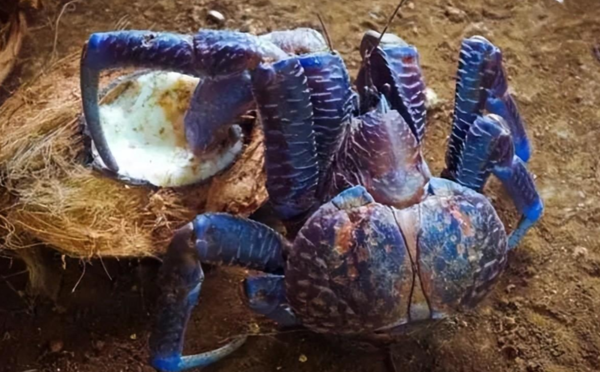
Coconut crab (scientific name: Birgus latro, foreign name Coconut Crab), also known as gossip crab and robber crab, belongs to the land hermit crab family. It is a decapod arthropod. It is the largest terrestrial arthropod in the world and the largest terrestrial crustacean in existence. It is named after its ability to break the shell of coconut with its pliers and eat the coconut flesh. It grows slowly and has a long life span of 40 to 60 years.
Coconut crab weighs about 6-12 kilograms, with a total length (from head to leg tip) of 1 meter, and the size between claws is about 1 meter. It has two strong and powerful claws. Coconut crabs are good at climbing trees and can climb up to 18 meters high. They can climb to the top of trees to find food. Some people call coconut crabs robber crabs. It is rumored that they will steal things such as cans and silverware from houses and tents. With habitat destruction and human predation, the coconut crab population in the world has rapidly decreased in recent years. In 1981, the coconut crab was listed as vulnerable by the IUCN Red List, but due to lack of biological data, it was revised to "inadequate data" in 1996. In 2018, the IUCN updated its assessment to "vulnerable". Taiwan has included the coconut crab in the list of Taiwan's conservation species.
It looks like a giant spider, with calcified and thick carapaces on the body and appendages, and the body is divided into cephalothorax and abdomen. There are wavy wrinkles on the surface of the cephalothorax and walking legs. The cephalothorax is round and protrudes forward, with a well-developed cephalothorax. The second maxillary exolimb is well developed, forming a maxilloscaphoid leaf. The first three pairs of thoracic limbs are specialized into maxillopods, and the last five pairs are walking legs. There are several rows of gills, which are attached to the base of the thoracic limbs, the side wall of the chest, or the joint membrane between them. The gill area of the cephalothorax is particularly enlarged, the frontal angle is triangular, and the eye scales are small. Each segment of the first antennal handle is slender, and the end of the whip is thick and slightly rod-shaped, which has a tactile function. There are many wrinkles generated by the epithelium on the inner wall of the gill cavity, which contain clusters of blood vessels for terrestrial respiration. The chelicerae are asymmetrical, with the left chelicerae larger than the right chelicerae, and are very strong and powerful, which can be used to open hard coconut shells and eat coconut meat. The first and second pairs of walking legs are strong, with claws at the end, which can be used to climb trees. The end of the third pair of walking legs is chelate-shaped, and the fourth pair of walking legs is very small, hidden in the gill cavity under the cephalothorax.
Part of the abdomen is folded to the ventral side of the cephalothorax. The carapace and side armor of the abdomen are calcified, slightly asymmetrical on the left and right, and partially bent under the cephalothorax. Only one side retains the degenerated abdominal limbs. The abdominal limbs are similar to those of hermit crabs, with only one side retaining the degenerated abdominal limbs, while the other side has completely disappeared. There is obvious metamorphosis during development, and the newly hatched larvae are nauplii.
The eyes are red, and the body color of this crab varies from purple-blue to orange-red between the islands where it lives. Studies have shown that male coconut crabs are much larger than females.
The claws used for hunting are one large and one small, and the rest of the body parts are bilaterally symmetrical, which is a hermit crab family. The legs are thick, and the left claw is slightly larger than the right claw; the inner wall of the gill cavity has many blood vessels to help breathing. Because they do not need to live in a snail shell that restricts their body growth, adult crabs are very large in appearance. There have been records of weighing more than seven kilograms and being nearly half a meter long. They are the largest arthropods on land.
Scientists have measured the strength of the coconut crab's claws and found that it can exert hundreds of newtons of pressure, enough to break coconut shells and other hard objects. The huge size and powerful claws make it one of the top predators in island ecosystems.
Generally, hermit crabs live in the spiral shells of gastropods, so their bodies are soft and asymmetrical, but coconut crabs have gotten rid of the snail shells that restrict their bodies. It grows large and strong by looking for or digging holes in places such as sand or tree roots. The body is symmetrical except for one large and one small claw for prey.
They dig as deep as possible when molting, and in the process they lose their original exoskeleton to make a larger one for themselves. Although their larvae thrive in water, they spend most of their adult life on land, but may occasionally enter the water.
Coconut crabs usually live in coastal habitats on oceanic islands up to 6 kilometers from the coast or on small islands close to larger continental islands. Most of them are found on the coasts of tropical areas and some subtropical archipelagos, and are most widely distributed in Taiwan, China, such as the East Coast, Green Island, Orchid Island and Hengchun Peninsula, and islands in the Indian Ocean and Pacific Ocean. American Samoa, Australia, Christmas Island, Cook Islands, Fiji, French Polynesia, Guam, India, Indonesia, Izu Islands and Ryukyu Islands in southern Japan, Kiribati, Malaysia, Marshall Islands, Federated States of Micronesia, Nauru, New Caledonia Niue, Northern Mariana Islands, Palau, Papua New Guinea, Philippines, Samoa, Seychelles, Solomon Islands, China, United Republic of Tanzania, Thailand, Tokelau, Madagascar, Seychelles and Easter Island, Tonga, Tuvalu, Vanuatu.
Regional extinction: Mauritius.
The largest terrestrial arthropod in existence. Originally a marine animal, it can live on land for a long time because of the many blood vessels on the inner wall of its gill cavity that can help it breathe, and does not often live in the ocean. Unlike crabs, it can walk in a straight line. They live in the sea when they are young, and when they grow up, they will leave the sea and go to land, living in the tropical rainforest on the island. After adapting to life on land, if they stay in the sea for a long time, they will be drowned by the sea water.
Coconut crabs use caves in the substrate as their shelter and food storage space. Caves can be used as a safe area from predators and a place to safely store food for later use. They moisten their gills or reproduce in the sea, and often hide in the cool woods, rocks and coral reefs by the sea during the day. They like night life and choose to rest in relatively cool places such as rocks or coral reefs during the day. They only come out to move and forage at night. They are typical "night owls". They have a very mixed diet and feed on coconuts, fruits, nuts and carrion. They have similar visual and sensory abilities to marine crustaceans, and up to 40% of their brains are used for smell. Their sense of smell is their secret weapon. When they hunt at night, the smell of fruits, nuts or small animals attracts them to their prey like a magnet.
They live on land for a long time and breathe with gills (but cannot breathe in water). Coconut crabs are oviparous animals. They return to the ocean to lay eggs during the breeding season and hatch in seawater.
The larvae are similar to other land hermit crabs in the early stage of reproduction. When they grow from megalopa to juvenile crabs, they also carry shells to protect their abdomens. They will not leave the shells until the carapace of the abdomen develops and hardens.
Coconut crabs grow very slowly and have to molt several times a year. Each molt will make the individual grow a little bigger. They usually molt in autumn and winter. Juvenile crabs molt about 2 to 3 times a year. As the individual grows bigger, the number of molts decreases. Adult crabs molt only once a year.
When coconut crabs are five years old, they are ready for sex and mate from May to September. During the breeding season every year, courtship is a long process for coconut crabs, but mating is unusually fast and simple. Coconut crabs climb down from coconut trees or emerge from holes in the ground. Mating occurs on land, and after mating is complete, the female will carry fertilized eggs under her abdomen and return to rivers, lakes, and seas to lay eggs in the water. Female coconut crabs scatter eggs in the water, where the larvae hatch. After the eggs are hatched into small crabs, the larvae are located in the middle and upper layers of the egg sac, and float to new areas on logs, coconuts, or other rafts in the next four to six weeks. They remain floating on the sea for up to 28 days, followed by an amphibious stage that takes 21 to 28 days, living in the water. After this stage, they will become shrimp-like conches and dive to the seabed to find a suitable snail shell as a shelter. Then, they will go to the beach and live on the high tide line for about 4 weeks to become young crabs.
When they grow up, they will crawl into the coconut grove again. At this time, the young crabs will occupy the shells of gastropods and migrate to land. This early shell and life are fragile, but it is enough to protect the young crabs from desiccation and predation. After 2 to 3 years of life, the body length is still less than 2 cm, at which time they will abandon the shell, strengthen their skin, and transform into a miniature of an adult coconut crab, with a chest length of only 5 to 10 mm. Their exoskeleton allows them to continue to grow and molt regularly. Molting takes about 30 days to ensure their safety in the cave, after which the coconut crab has a strong skeleton. After that, the growth of coconut crabs is very slow, and evidence shows that they can live to more than 40 years old. After adulthood, they no longer increase their body length.
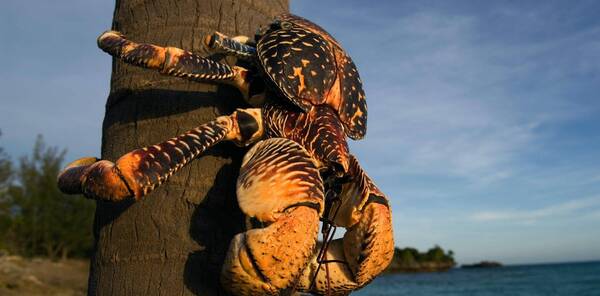
The Red List of the World Conservation Union (IUCN) lists coconut crabs as "vulnerable" species.
In 1978, Christmas Island, Australia, has enacted relevant laws that explicitly prohibit the killing of coconut crabs, and violators will be severely punished.
Human activities have led to the destruction of coconut crab habitats, including coastal development, beach pollution and habitat fragmentation. These factors threaten the living space and food source of coconut crabs.
Some areas also over-hunt because of their delicious meat, which has an unignorable impact on the population and genetic diversity of coconut crabs.
FAQ
What is a coconut crab?
The coconut crab is the largest terrestrial arthropod, belonging to the family Coenobitidae, with the scientific name Birgus latro. It is known for its powerful claws and ability to climb trees.Can coconut crabs really crack open coconuts?
Yes, coconut crabs use their strong pincers to crack open coconut shells, which is how they got their name. However, their diet is diverse, including fruits, carrion, and small animals.Where do coconut crabs live?
Coconut crabs are primarily found on tropical islands in the Indian and Pacific Oceans. They inhabit burrows in sandy or rocky areas, often near vegetation.Are coconut crabs poisonous?
Coconut crabs themselves are not poisonous, but if they consume toxic plants, they may carry toxins. In some regions, eating them requires caution.Why are coconut crabs endangered?
Due to overharvesting, habitat destruction, and slow reproduction rates, coconut crab populations have significantly declined in many areas. They are currently classified as Near Threatened (NT).

